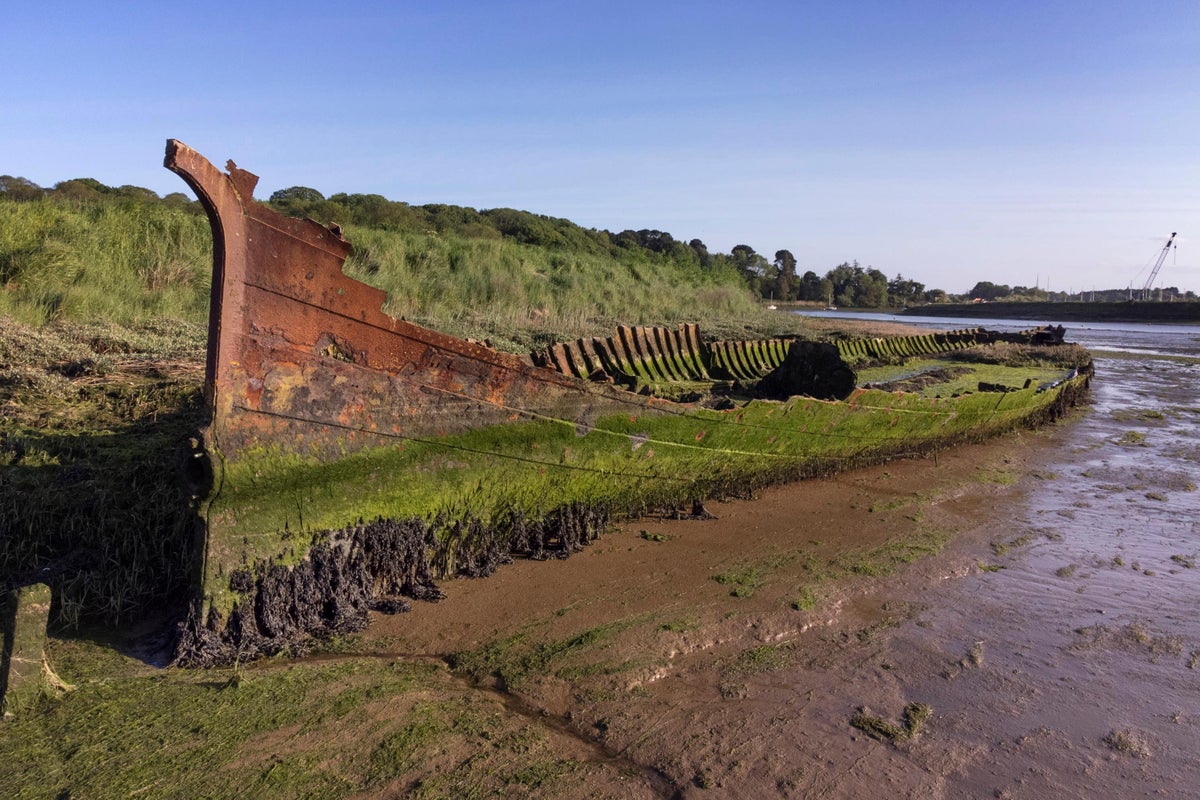
The remains of a Victorian ship designed by Cutty Sark shipwright Hercules Linton before the launch of the internationally renowned vessel have been granted protected status.
Linton designed the iron steamship the Lady Alice Kenlis in 1867 and its remains lie on the National Trust’s Sutton Hoo estate in Suffolk, at a section of the River Deben that is not publicly accessible.
Its remains are described as a hulk rather than a shipwreck, as there was no wrecking event.
Hulks are ships that have been abandoned, partially dismantled and then stripped of their fittings and permanently moored within intertidal areas, canals, estuaries and rivers.
The hulk of the Lady Alice Kenlis has been granted protection by the Department for Culture, Media and Sport (DCMS) on the advice of Historic England.
Its designer, Linton, went on to design the Cutty Sark, which launched two years later in 1869.
The Victorian tea clipper, now at Royal Museums Greenwich, was one of the fastest of its time, making the journey from Sydney to London by sail in 73 days.
A clipper is a type of 19th century merchant sailing vessel, designed specifically for speed.
Historic England said that the Lady Alice Kenlis gives an insight into Linton’s evolution of thought, and its protection by scheduling will ensure that the hulk of the ship will be protected by law.
Arts and heritage minister Lord Parkinson of Whitley Bay said: “The hulk of the Lady Alice Kenlis, resting in the River Deben, offers us an important insight into the work of Hercules Linton, who – as the designer of the Cutty Sark – became one of the most notable shipwrights of the 19th century.
“I am delighted that this important piece of our national heritage has been given protected status so that it can be preserved for generations to come.”
The Lady Alice Kenlis was named after Alice Maria Hill, daughter of the Earl of Hillsborough, who married Lord Kenlis, a politician and the Earl of Bective in Ireland, to become Lady Alice Kenlis in 1867.
It was built by J&R Swan in Maryhill, Glasgow, and launched on December 23 1867.
The hull was heavily built in comparison to other iron ships of the time to allow it to be more easily loaded and unloaded in shallow waters.
The ship was fitted with a two-cylinder 40 horsepower engine and rigged as a three-masted schooner.
A schooner is a type of vessel with two or more masts.
Serving as a cargo ship in 1868, it was used to carry cattle, goods and passengers between Northern Ireland, Scotland and England.
It was briefly used as a ferry, later re-registered as the Holman Sutcliffe and converted into a suction dredger in 1913.
The vessel continued as a dredger until it was partially dismantled in the late 1930s or early 1940s.
Duncan Wilson, chief executive of Historic England, said: “Whilst only the rather ghostly remains of the Lady Alice Kenlis survive, it deserves protection as an important part of our seafaring history.
“Being able to see the hulk of the ship itself emerging from the intertidal zone of the River Deben is striking and unusual.”
Angus Wainwright, archaeologist at the National Trust, said: “This is now our second scheduled ship at Sutton Hoo, as we also look after the site where the famous Anglo-Saxon burial ship was excavated in 1939.
“What’s interesting to me is that the Sutton Hoo ship was nearly as long as its Victorian descendant, the Lady Alice Kenlis.”







